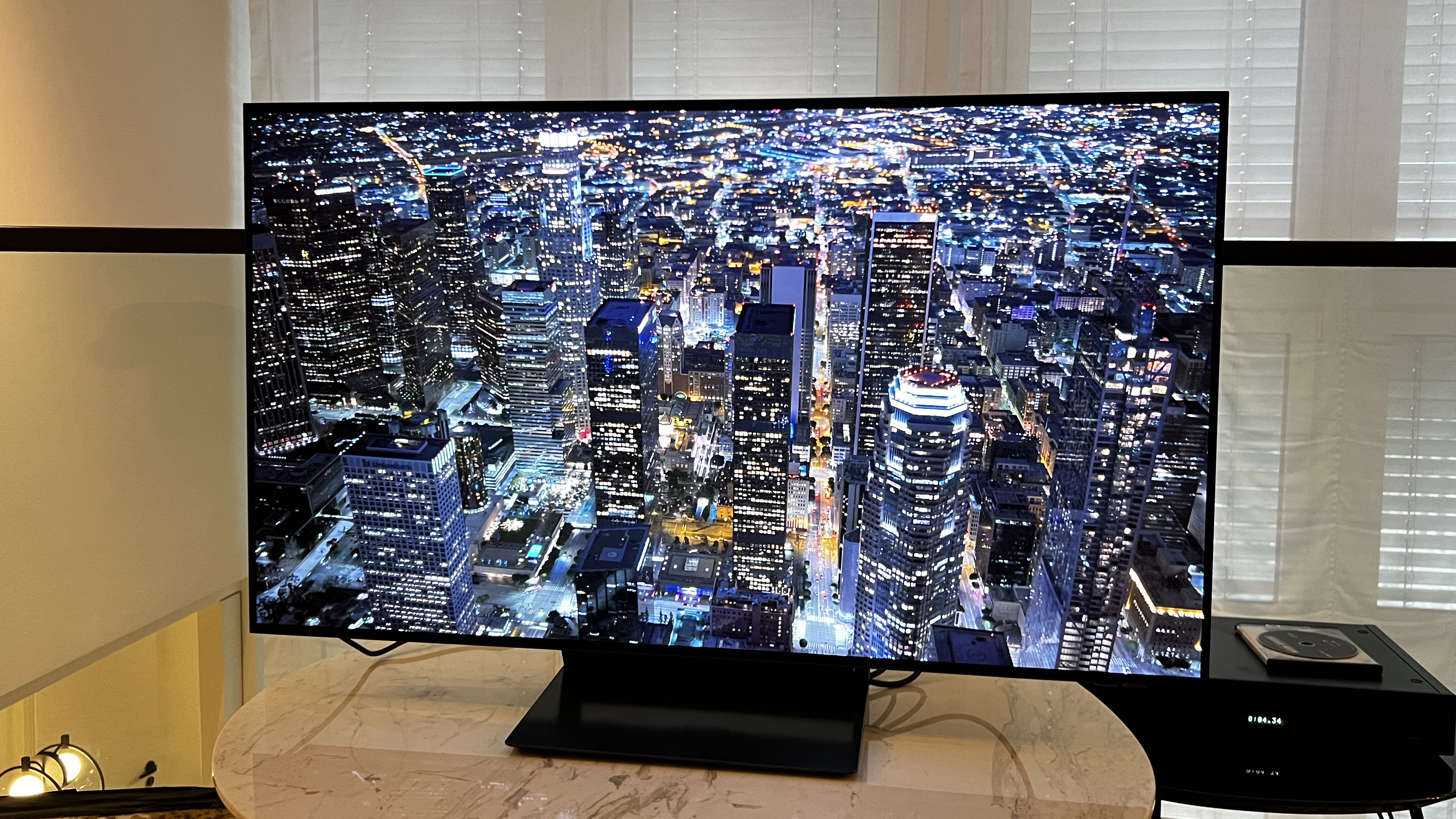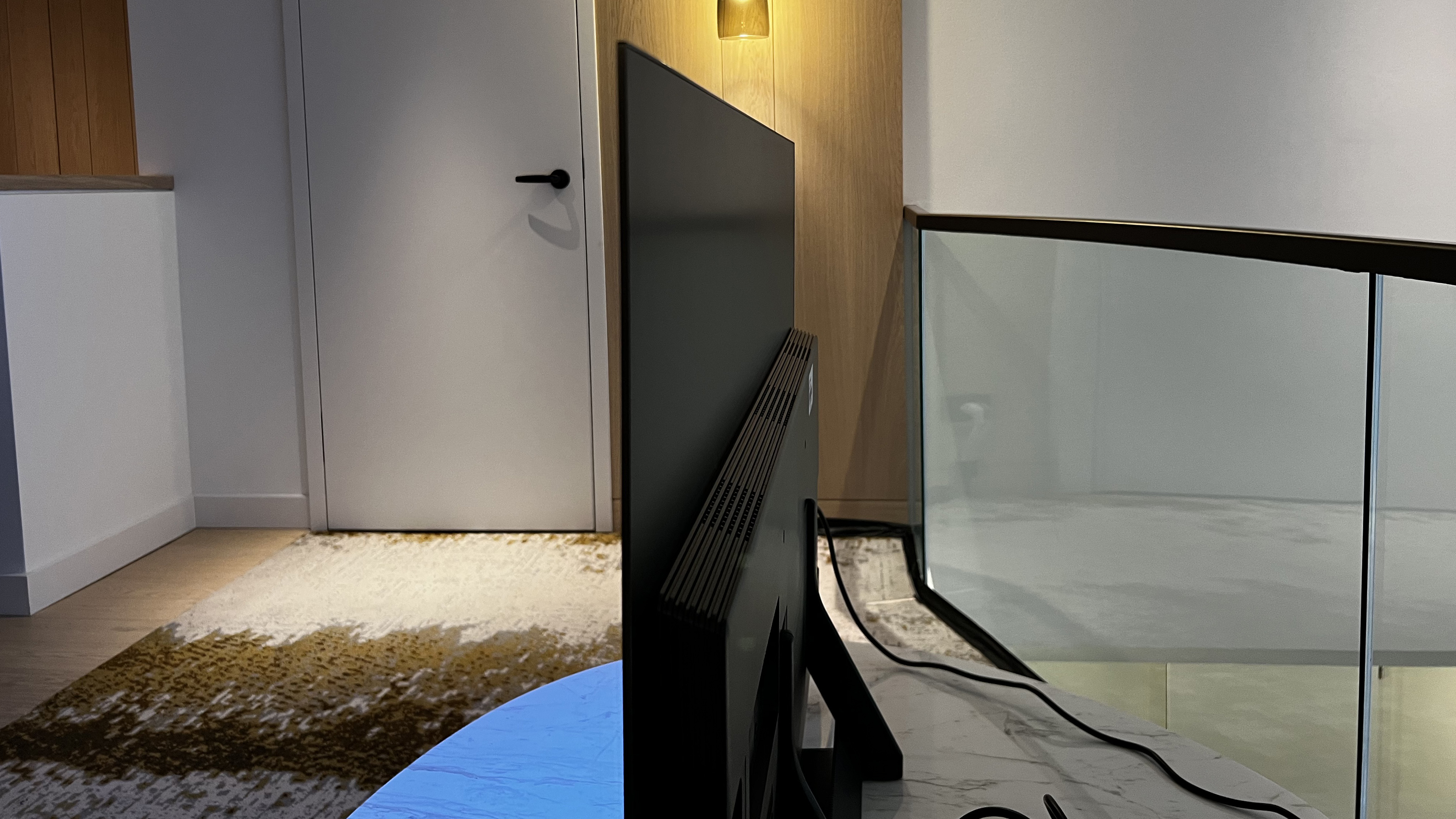[ad_1]
In 2024, Samsung is introducing its first OLED TVs smaller than 55-inches, as part of the Samsung S90D model range. These 42-inch (US only) and 48-inch (US & UK) TVs won’t use the bright QD-OLED panel type that earned the Samsung S90C our TV of the Year Award for 2023, but instead will use the same kind of OLED panel you’ll find in LG’s OLEDs. And as with all Samsung TVs, these models will lack Dolby Vision HDR, which is a real concern for us, because Dolby Vision’s biggest advantage is making HDR look great on less bright screens.
After spending some time the 48-inch Samsung S90D, I needn’t have worried. Not only do its images feel bright and rich, the screen seems to be able to handle challenging HDR scenes well, and even offers impressive sound. Given the other impressive specs on offer as well, it looks like it could be an extremely strong challenger to the best 48-inch TVs.
I was able to test the 48-inch S90D armed with my own own choice of movies, plus the Spears & Munsill test disc that we can’t live without when testing TVs. Throwing on Alien, I could immediately see that the TV has a lot of talent with nuance in dark scenes. As Kane descends into the threatening bowels of the alien spaceship, the parts that should be truly inky black hit that mark (as you’d expect from an OLED), but you can subtle, very dark texture in the areas near the light patches.
And speaking of the light patches, the 48-inch S90D certainly felt bright enough to deliver high-quality HDR. Typically, 42- and 48-inch OLEDs are always less bright than 55-inch and larger OLEDs, due the tight fit of the pixels – but we’ve already heard that the smaller models in this year’s LG C4 OLED TV will be brighter than previous years, and given that the Samsung uses the same screen, I’m guessing this is similarly bright.
It’s rich in color with big, bold tones – but the colors also feel controlled and realistic. Vibrant and punchy, but comfortably on the right side of natural – skin tones in Oppenheimer looked true-to-life, and the level of detail did justice to that 70mm original film.

No Dolby Vision, no problem?
I really worried about the lack of Dolby Vision on this TVs, but I threw some especially challenging HDR video at it to try to show its flaws, and it borderline made a fool of me.
First, some background on why Dolby Vision is important, and what I was worrying about in the first place. When films are mastered for release, the look is perfected for a particular brightness. This can be as high as 10,000 nits, though 1,000 nits is the most common for home video release. What this means is that if you have a video mastered for 1,000 nits playing on a screen capable of 1,000 nits of brightness, you’ll see the video’s HDR as was intended.

So what happens if you play a video mastered for 1,000 nits on TV with a maximum brightness of around 700 nits (which is probably roughly what we’re talking for this Samsung)? The full HDR range has to be compressed into a smaller HDR range, and this process is called ‘tone mapping’.
Tone mapping can be done smartly, or dumbly. The dumb version would be to just take everything above a certain HDR level and squish it all down to the maximum of what the TV can handle. This results in lots of lost nuance in highlights – so, for example, what should be a fluffy, layered cloud becomes just a big smear of uniform white.
The smart approach is adjust down the brightness of tones across the whole range, but it’s easy to get this wrong and end up with lost detail in dark tones, or to still lose convincing highlights. The most advanced processing in the best TVs can actually adjust tone mapping on different parts of the screen at the same time, to avoid these problems.
A huge advantage of Dolby Vision, HDR10+ (which the Samsung S90D supports, but is less commonly used) and HDR formats is that they include tone mapping data, to ensure results closer to the original intention. That’s why we’ve always considered it so important to have Dolby Vision on the best OLED TVs – because most models still struggle to hit 1,000 nits of brightness, so they’ll need to perform tone mapping with more HDR content.

Which is a lot of build-up for me to say: from my experience so far, the tone mapping on the S90D appears to be so good, Dolby Vision is unnecessary. I tested it with the same video being shown in 10,000-nit HDR10 (which requires aggressive tone mapping), 1,000-nit HDR10 (which requires more gentle tone mapping), and 10,000-nit HDR10+ (where the tone mapping is handled by the HDR format for best results).
The difference between all three was minimal. Not quite zero – the 10,000-nit HDR10 video did has slightly more washed out white tones in difficult circumstances (like the clouds example above, or snowy scenes) – but close enough to quell my concerns about this aspect of the TVs.
Obviously, we’ll reserve final judgment until we can get this model in for an in-depth review, and ideally we’ll compare it directly with the Dolby Vision-supporting LG C4 at the same size, since they use the same underlying screen tech. But for me, the lack of Dolby Vision doesn’t seem to be an issue at all.
It all sounds good
I was also impressed with the sound of the TV. It doesn’t have a fancy array of speakers around the edge, in the way that the larger S90D models, or the Samsung S95D and Samsung QN90D, do – but I found it to be capable of impressive height, solid chest-out depth, and a surprising dynamic range with the ‘Amplify’ mode turned on, while still feeling fairly natural. It didn’t have a ton of width, but that’s forgivable. It certainly felt like you could get away without a soundbar from my first listen.

Other useful info to know about the Samsung S90D includes that it has a 144Hz screen, with support for 4K 120Hz or 144Hz gaming on all four HDMI ports, as well as variable refresh rate and auto low latency mode. It has Samsung’s Game Bar menu to make it easy to customizing the settings, too – it will likely be a strong contender for our list of the best gaming TVs.
Samsung’s new processor is included, and it supports a wireless connection to certain Samsung Dolby Atmos soundbars, and includes Samsung Q-Symphony support to combine its speakers with the soundbar’s, if you do choose to add one.
We don’t have prices yet – it appears that this size is launching a little after the larger models in the range. But I’m looking forward to spending more time with it.
You might also like…
[ad_2]
Source Article Link

